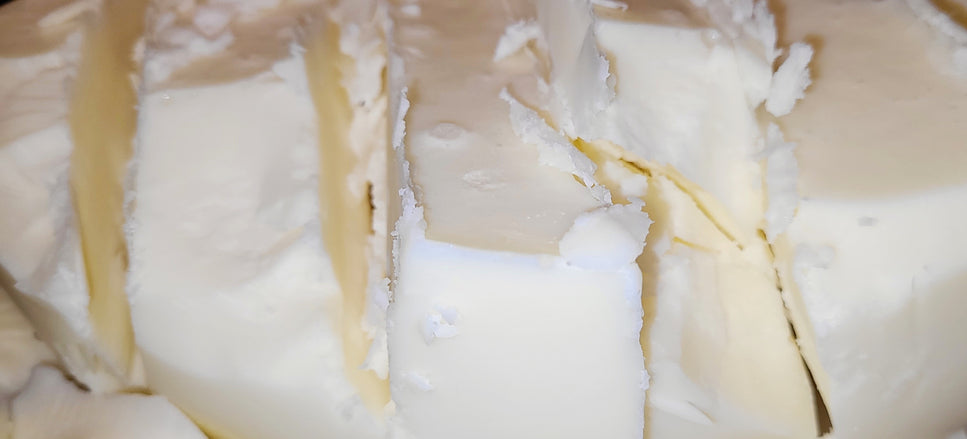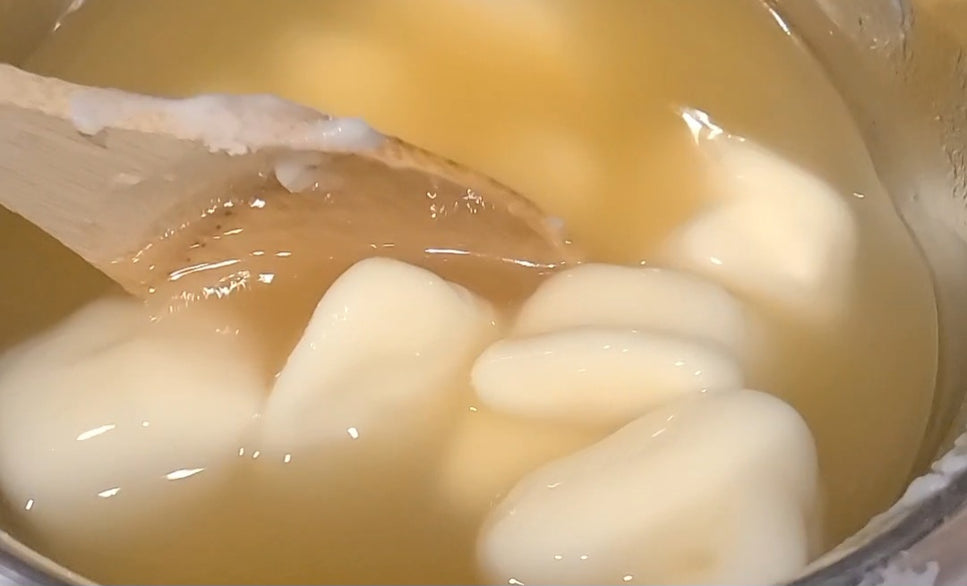Why Tallow

So what exactly IS tallow?
Tallow is beef fat that is rendered. Now days, the beef fat is often thrown away and wasted. Our ancestors were so resourceful, and they valued and utilized every part of an animal for their food, clothing, tools, and even tallow as emollients. It’s also been noted that beef tallow was used in ancient Egyptian cultures as a balm!
Tallow is similar to our skin sebum on a molecular level, so it's incredibly compatible with our skin and absorbs really well. A small amount goes a very long way!
Why is it important the tallow be grass-fed and finished?
Beef tallow, specifically 100% grass-fed and finished, has so many incredible qualities that work together to deeply nourish our skin. Research supports that grass-fed beef tallow has higher levels of Vitamins A, D, E, and K, and is a rich source of important fatty acids (1).
Vitamins & Skin:
- Vitamin A – strengthens, supports skin cell replacement (10).
- Vitamin D – protective against free radicals, repairs skin (8).
- Vitamin E – crucial for aging skin, strong antioxidant that protects against free radicals (7). Was found to be quadrupled in grass-fed beef (6).
- Vitamin K – improves skin texture and tone, helpful for wound healing (9).
The rich composition of fatty acids in Tallow:
- Conjugated Linoleic Acid/CLA (Omega-6) - an antioxidant that increases skin hydration, balances oil and moisture, reduces inflammation (2).
- Omega-3 fatty acids (alpha-linolenic acid) - important supplement for treatment of skin conditions such as psoriasis, acne, & dermatitis (3). Omega-3s are vital for supporting our body’s anti-inflammatory response and protect against sun damage (4).
- Oleic acid, Palmitoleic acid, and Stearic acid - all vital for the layers of skin to retain hydration, increase flexibility, improve healing and protection mechanisms (5).
All of these nutrients are not only important for whole-body health but are essential to promote skin health and integrity. It's fascinating that tallow is also naturally antimicrobial, giving our skin that extra protectional mechanism against foreign invaders.
Why are modern lotions NOT as healthy and safe as we thought?
After discussing some of the many natural health benefits of using tallow as your new favorite moisturizer, it’s also important to touch on why modern lotions can be harmful. Personally, I don’t like to focus on the negatives, but after years of being a nurse, I wholeheartedly believe it's imperative to discuss both the benefits and risks when starting new products/treatments. It’s important to know the potential risks with hidden ingredients that are in modern skincare products. It’s really simple -- if you wouldn’t eat it, don’t put it on your skin!
HARMFUL INGREDIENTS IN MODERN SKIN CARE PRODUCTS
- Fragrance/Parfum –undisclosed mixture of scented chemicals, strong evidence of toxicity to immune system, dermatitis, allergies, potential effects on endocrine system (EWG).
- Petrolatum/mineral oil jelly – probable immune toxicant and allergen, potential organ system toxicity (EWG); considered a carcinogenic by-product of gasoline distilled from crude oil.
- Parabens (propylparaben, methylparaben, butylparaben,etc) – preservative & fragrance ingredient, known hormone system disruptors that mimic estrogen, known skin irritants/immunotoxicity, linked to breast cancer (EWG).
- Retinyl Palmitate – high risk of cancer, may speed development of tumors & lesions, known reproductive toxicant (EWG).
- Titanium dioxide,Triethanolamine, DMDM-Hydantoin – probable carcinogens (EWG).
- Methylisothiazolinone – immune toxicant and allergen, skin irritant, can cause nerve damage, outlawed in many countries but legal in USA (EWG).
- Behentrimonium Methosulfate – known allergen & toxicant, associated with endocrine disruption, potential neurotoxicity & organ system toxicity (EWG).
- Butylated Hydroxytoluene (BHT) – synthetic stabilizer with links to allergic skin reaction, rashes, liver & kidney toxicity, potential carcinogen (EWG).
- Dmdm Hydantoin (Formaldehyde releaser) –known allergen & immune toxicant to skin (EWG).

Sources:
1. https://www.ncbi.nlm.nih.gov/pmc/articles/PMC2846864/#!po=8.41584
2. https://www.paulaschoice.com/expert-advice/skincare-advice/ingredient-spotlight/how-omega-fatty-acids-help-skin.html
3. https://pubmed.ncbi.nlm.nih.gov/32463305/
4. https://lpi.oregonstate.edu/mic/health-disease/skin-health/essential-fatty-acids#functions
5. https://draxe.com/nutrition/tallow/
6. Smith, G.C. “Dietary supplementation of vitamin E to cattle to improve shelf life and case life of beef for domestic and international markets.” Colorado State University, Fort Collins, Colorado 80523-1171
7. https://www.ncbi.nlm.nih.gov/pmc/articles/PMC4976416/
8. https://www.ncbi.nlm.nih.gov/pmc/articles/PMC4642156/
9. https://www.ncbi.nlm.nih.gov/pmc/articles/PMC6533928/
10.https://www.ncbi.nlm.nih.gov/pmc/articles/PMC3936685/
11. https://www.ewg.org/skindeep/
